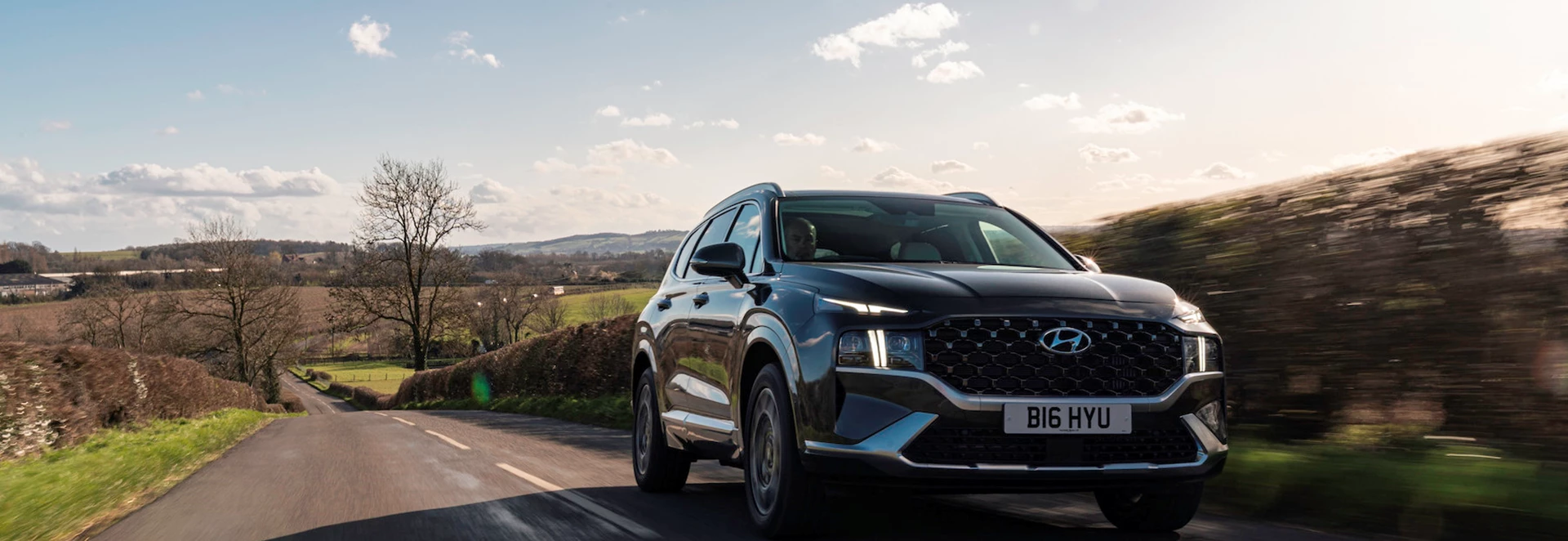Introduction
There has been a lot of change at Hyundai recently, with the South Korean brand overhauling pretty much its full range, while moving things further upmarket too. These changes aren’t just affecting the brand’s latest cars, but also some of its longest-running nameplates – notably the Santa Fe.
This large SUV is now Hyundai’s longest-running model, with the Santa Fe being sold in the UK since 2001 across a number of generations. Though the latest model only arrived in 2018, it’s now been overhauled as part of a mid-life update.
Key revisions include a redesigned front end that gives the Santa Fe a huge grille with great presence, along with new LED lights. Inside, it gets a redesigned cabin layout that takes advantage of Hyundai’s latest technology, while cabin space has improved too.
Also new are a pair of electrified powertrains, which aim to make the Santa Fe more efficient than its predecessor.

Performance
Previously the Santa Fe came equipped with a large diesel engine under the bonnet, but it’s all changed as this seven-seater is now only offered with a choice of two hybrid powertrains.
There’s a regular ‘self-charging’ setup or a plug-in hybrid for those that want to travel further on electric – you can expect around 27 miles once the battery is fully charged. Both powertrains revolve around the same 1.6-litre turbocharged petrol engine, and each uses a six-speed automatic gearbox too.
The standard Hybrid model develops 227bhp, and gets the choice of front- or all-wheel-drive, and is able to go from 0-60mph in 8.7 seconds. As for efficiency, Hyundai claims 44.1.mpg and 145g/km CO2 emissions, or 40.4mpg and 159g/km CO2 for the all-wheel-drive.
If you choose the plug-in hybrid, it uses a four-wheel-drive setup by default, and develops 262bhp in all. Despite the extra power, though, the additional weight of its batteries means it’s almost identically quick to the standard hybrid. It is, however, much more efficient on paper. Hyundai claims 173.7mpg, with CO2 emissions of just 37g/km.

Ride and handling
We’ve tried both hybrid and plug-in hybrid versions of the Santa Fe, and it’s the latter that gets our vote. It’s able to cleverly use its electric reserves to maximise efficiency, with the electric reserves lasting far longer than you might expect. Visibility is excellent too, while there are some great tricks to help you get used to the Santa Fe’s sheer size – including a surround-view camera and blind spot cameras that project images onto the digital dial display when you indicate.
Though perhaps not quite as quick as the figures suggest, there’s more than enough pace to it, while the impressive refinement makes it great for longer trips. The ride quality isn’t great, though, with the additional heft of the battery occasionally making the ride feel unsettled.

Interior
The thing that impresses most about the Santa Fe’s interior is space. It really is vast, and is a car that seven can sit comfortably in, though the rearmost seats can be quite cramped. As a five-seater, it also has a huge boot.
The overall quality is excellent too, with top-spec cars coming with quilted seats, a lovely sculpted dashboard and loads of technology – including a large widescreen touchscreen and digital dial display. The centre console is littered with buttons, but aside from that this Hyundai’s interior is hard to fault.

Equipment
The Santa Fe range has been slimmed down, leaving just two high-spec models to choose from – Premium and Ultimate.
All versions get loads of equipment, with the Premium coming with keyless entry, a Krell sound system, dual-zone climate control, heated front seats and a 10.25-inch touchscreen to name just a few features.
The Ultimate truly gets all the bells and whistles, though, including rear climate settings, ventilated seats and a head-up display. A full-length panoramic glass roof is also fitted, along with a feature that lets you park the car using the key, and also a digital instrument cluster.

Cost
Hyundai’s step upmarket means that the Santa Fe isn’t the bargain seven-seater SUV it once was, but considering the space and equipment on offer, it remains attractively priced.
Versions start from £40,695 for the hybrid, or £45,810 if you choose the plug-in hybrid. The Ultimate adds around £3,000 to the price, and means that top-spec Santa Fe models cost close to £50,000.

Verdict
The Santa Fe has grown with Hyundai – becoming more upmarket and generally far more pleasant in the process. This is a large SUV that can truly do it all, from its vast interior space to its quality, and even low running costs from these hybrid models.
Though it no longer comes cheap – and the bold design won’t suit everyone – there are few better SUVs you can buy for under £50,000.




